Hi GPODers!
We’re back in Boulder, Colorado (Zone 4/5) to see more of Bonnie Phipps Moninger’s gorgeous flower garden. In case you missed it yesterday, check out Part 1 here. Yesterday we saw the new flower garden full of spring blooms, today we get to see how the space looked in late summer.
In 2006 we built a 19’ diameter walking circle in our north side yard (pictured below.) We built it about 3’ in front of three beautiful Buffalo junipers (Juniperus sabina ‘Buffalo’, Zones 3–7) that were there when we moved in. But the junipers kept growing and eventually grew into our walking circle. I kept cutting them back each year and eventually, they became an ugly jumper wall. So, in April 2020, Raul, the gardener I work with, dug them out along with a few other plants that were there. It was amazing how much space each juniper took up. I decided to redo the whole area into a flower bed since this is one of the few areas in our yard that gets a fair amount of sun, though not exactly full sun.
 My Garden Fairy amongst all the flowers including Kniphofia in the foreground and Annabelle hydrangeas (Hydrangea arborescens ‘Annabelle’, Zones 3–9) in the back sitting area. At the bottom of the rock are spring-blooming snowdrop anemones (Anemone sylvestris, Zones 2–9) that I planted this year. I hope they come back next spring. It’s hard to get plants to grow in that small 4” deep area in front of the rock. I’ve been trying, but they don’t last!
My Garden Fairy amongst all the flowers including Kniphofia in the foreground and Annabelle hydrangeas (Hydrangea arborescens ‘Annabelle’, Zones 3–9) in the back sitting area. At the bottom of the rock are spring-blooming snowdrop anemones (Anemone sylvestris, Zones 2–9) that I planted this year. I hope they come back next spring. It’s hard to get plants to grow in that small 4” deep area in front of the rock. I’ve been trying, but they don’t last!
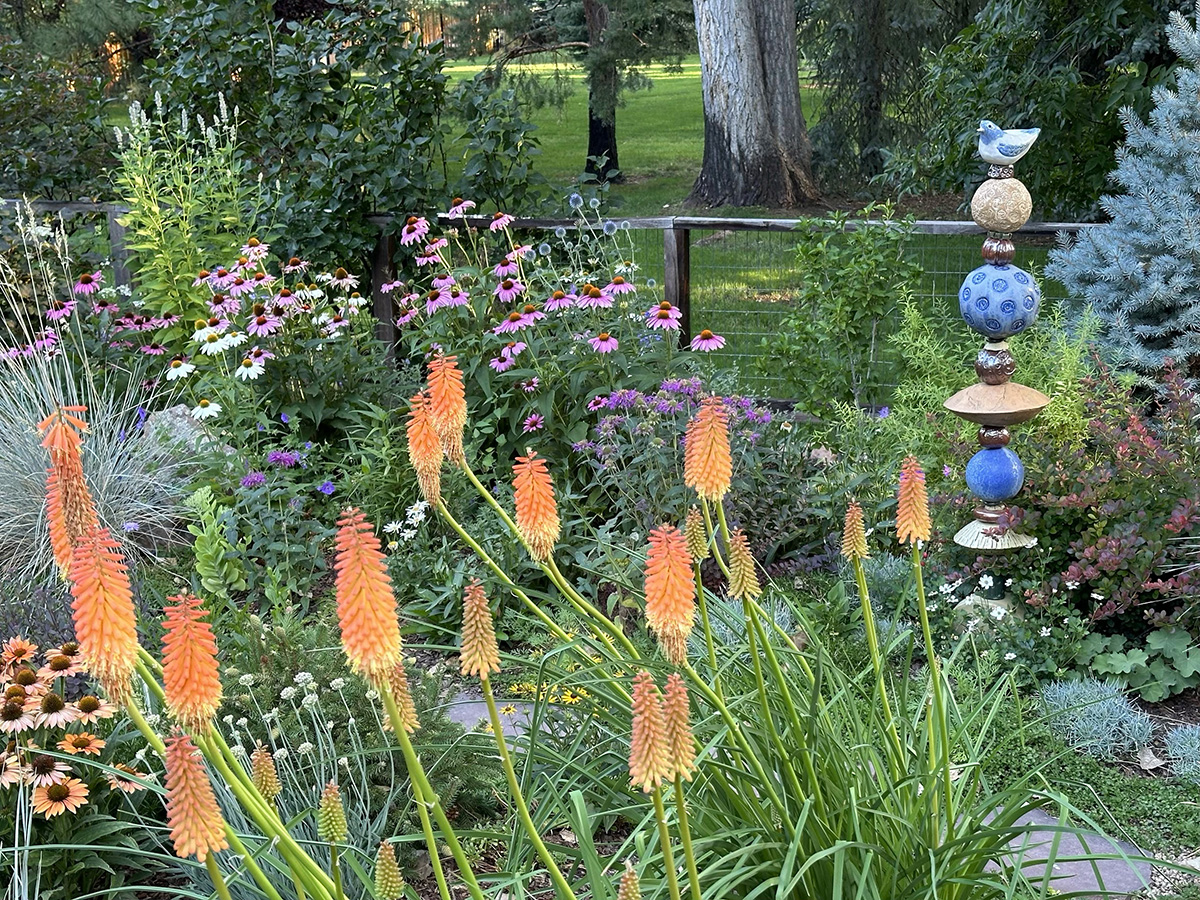 Kniphofia (red hot pokers) in front with coneflowers in the back. On the right is a garden totem I made this spring in a ceramic class. That was SO fun!
Kniphofia (red hot pokers) in front with coneflowers in the back. On the right is a garden totem I made this spring in a ceramic class. That was SO fun!
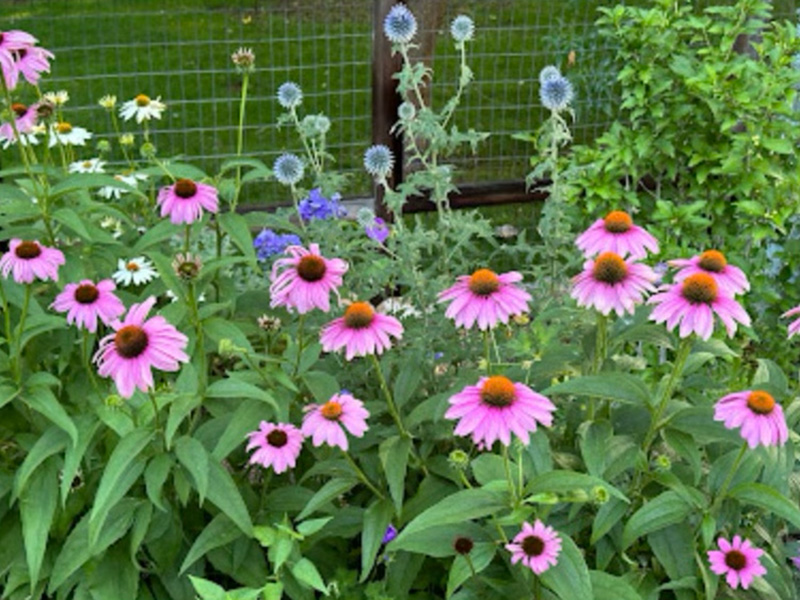 A closer look at the Magnus coneflowers (Echinacea purpurea ‘Magnus’, Zones 3–9) and blue globe thistles (Echinops bannaticus ‘Blue Glow’, Zones 3–8). They make a nice combination. I will add more thistles in that area this spring.
A closer look at the Magnus coneflowers (Echinacea purpurea ‘Magnus’, Zones 3–9) and blue globe thistles (Echinops bannaticus ‘Blue Glow’, Zones 3–8). They make a nice combination. I will add more thistles in that area this spring.
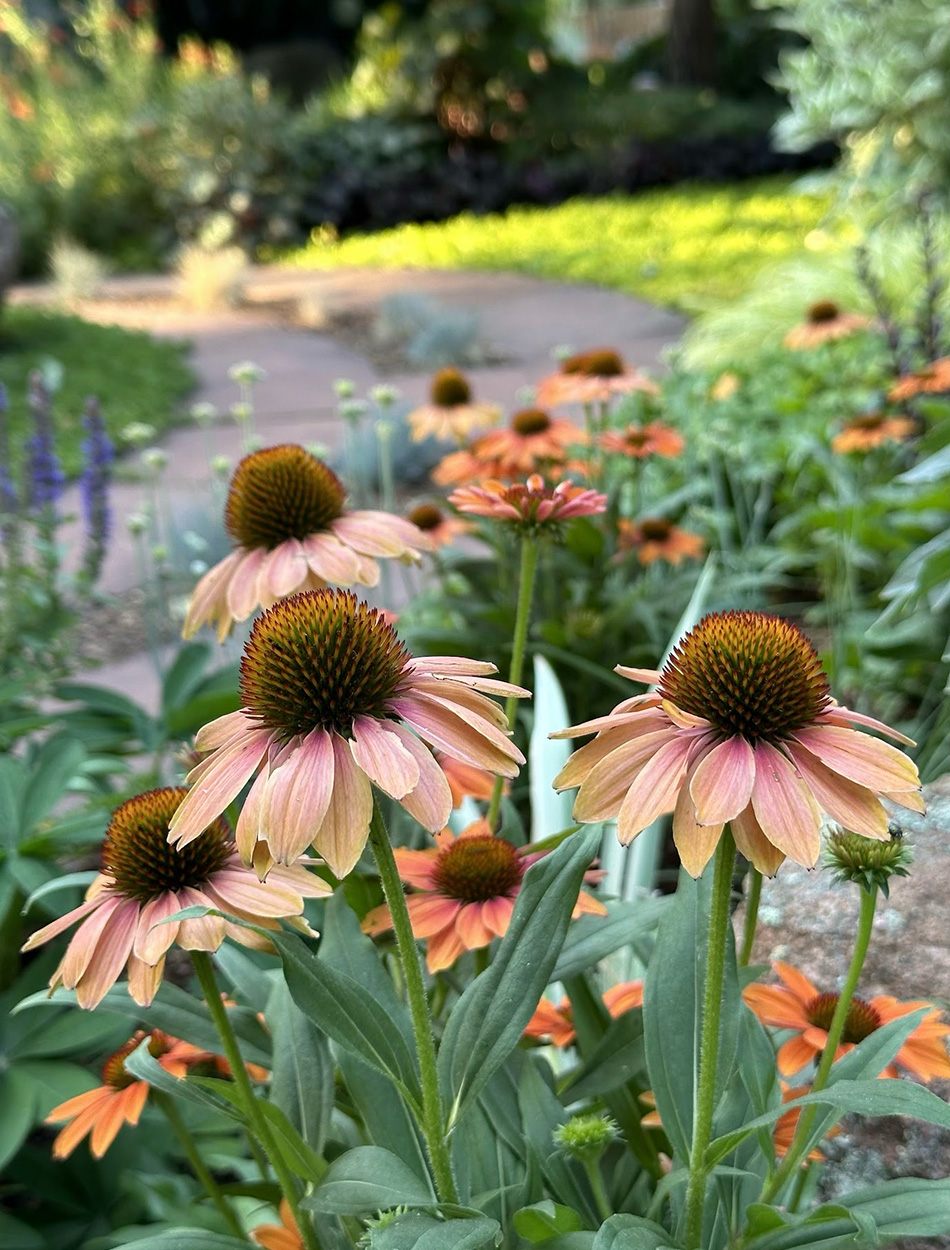 Prima™ Ginger coneflower (Echinacea ‘TNECHPG’, Zones 4–9) grows only 16” high.
Prima™ Ginger coneflower (Echinacea ‘TNECHPG’, Zones 4–9) grows only 16” high.
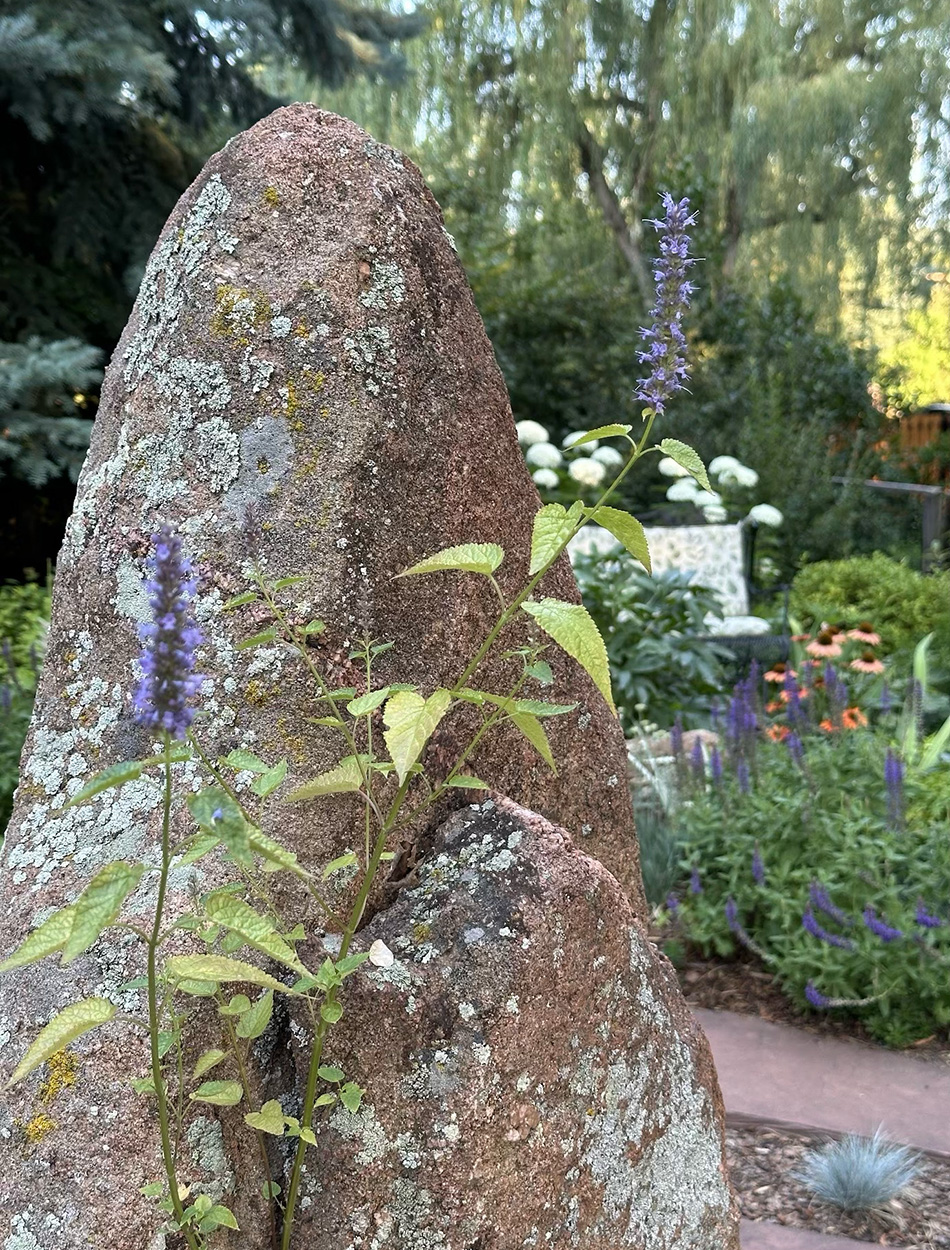 I have Blue Fortune agastache (Agastache ‘Blue Fortune’, Zones 5–9) in the back of my garden and somehow its seeds got in the cracks of the tall rock in our walking circle and this plant grew there and comes back each year!
I have Blue Fortune agastache (Agastache ‘Blue Fortune’, Zones 5–9) in the back of my garden and somehow its seeds got in the cracks of the tall rock in our walking circle and this plant grew there and comes back each year!
So far, I’ve picked the best views of the Flower Garden but there are other areas that still need to be filled in or where plants just didn’t work. To give you another perception of the garden, the next pics are of areas that still need work – but, that’s the fun of it.
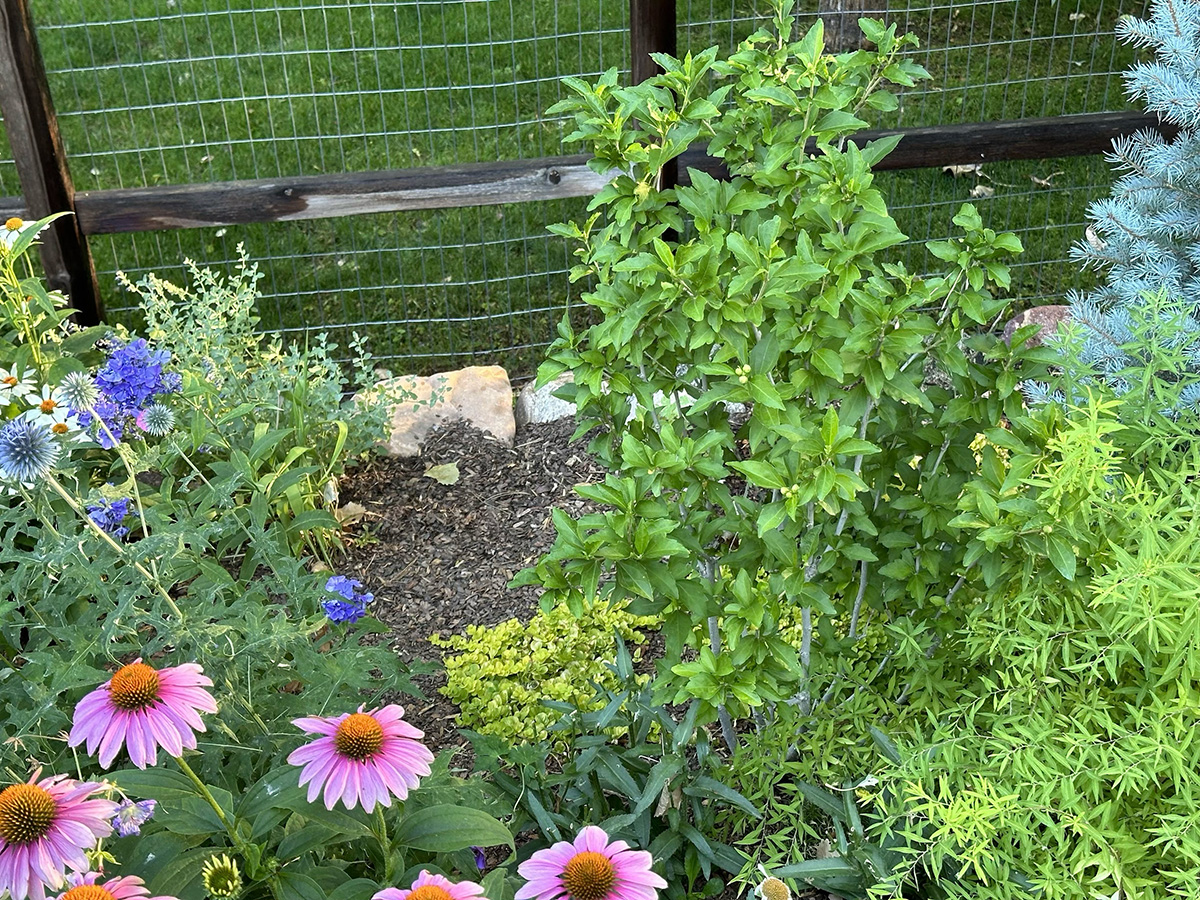 The dwarf rose of Sharon (Hibiscus syriacus, Zones 5–9) pictured here gets about 4 blooms a season even though it gets buds on it. It’s time to give it away. Plus the area behind it needs to be filled in too. The plant in front of it is a Mellow Yellow spirea (Spiraea thunbergii ‘Ogon’, Zones 4–8) and has great texture. I might try filling in that back area with a dark leaves plant like a dark ninebark and maybe tuck in an Annabelle hydrangea.
The dwarf rose of Sharon (Hibiscus syriacus, Zones 5–9) pictured here gets about 4 blooms a season even though it gets buds on it. It’s time to give it away. Plus the area behind it needs to be filled in too. The plant in front of it is a Mellow Yellow spirea (Spiraea thunbergii ‘Ogon’, Zones 4–8) and has great texture. I might try filling in that back area with a dark leaves plant like a dark ninebark and maybe tuck in an Annabelle hydrangea.
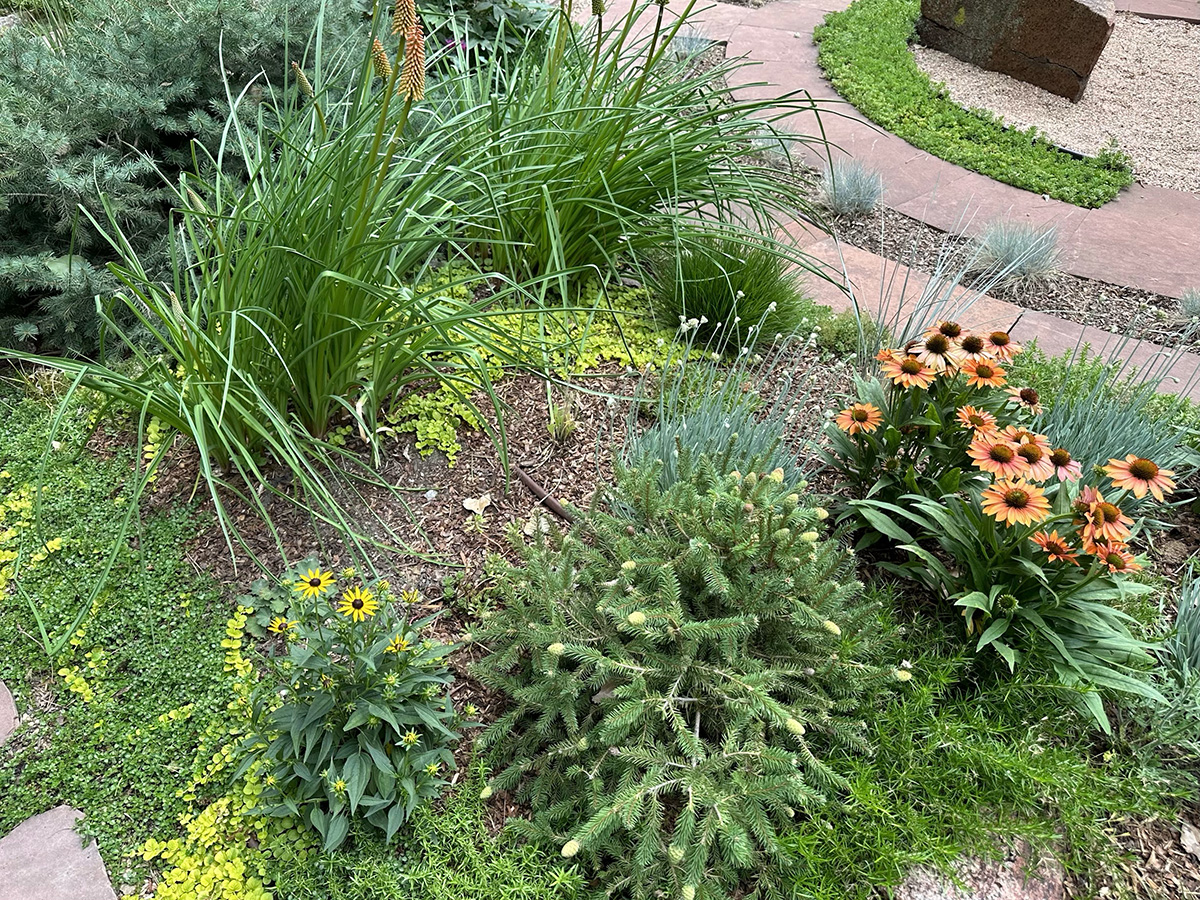 I want to fill in this bare area in front of the red-hot pokers so by the time its grass-like foliage covers it, it won’t matter. I might try planting Triumph asters (Aster x alpellus ‘Triumph’, Zones 3–9) which bloom in early June and are different from other asters because their foliage makes a mat flat to the ground and the 8″ aster stems come up out of the foliage. (See pic below) Or, maybe I will plant spring-blooming geraniums or dianthus.
I want to fill in this bare area in front of the red-hot pokers so by the time its grass-like foliage covers it, it won’t matter. I might try planting Triumph asters (Aster x alpellus ‘Triumph’, Zones 3–9) which bloom in early June and are different from other asters because their foliage makes a mat flat to the ground and the 8″ aster stems come up out of the foliage. (See pic below) Or, maybe I will plant spring-blooming geraniums or dianthus.
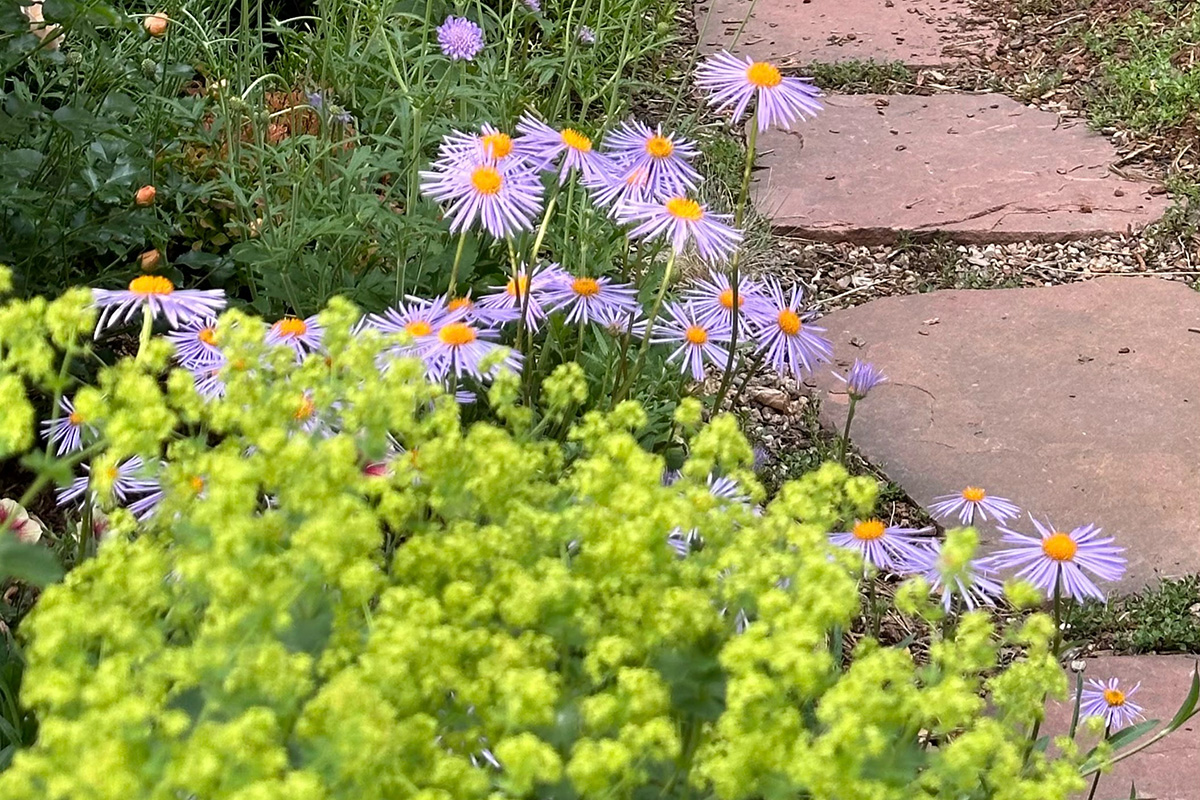 Asters that bloom in the spring peaking out behind the lady’s mantle (Alchemilla mollis, Zones 3–8). I’m sorry I don’t have a photo of this aster’s foliage. It naturalizes too but very slowly. I love this plant.
Asters that bloom in the spring peaking out behind the lady’s mantle (Alchemilla mollis, Zones 3–8). I’m sorry I don’t have a photo of this aster’s foliage. It naturalizes too but very slowly. I love this plant.
Thank you so much for sharing this wonderful garden project with us, Bonnie! The floral tapestry you have been able to weave is already so impressive, and I hope we get to see the future alterations and improvements you’ll make.
Lastly, a friendly reminder that we’re in need of submissions here at Garden Photo of the Day. I know many of us are patiently waiting for spring to really emerge in our gardens, but in the meantime we can always admire photos from last spring. Check out the paragraph below for information on how to submit your garden, and I hope to see photos of your fabulous flowers soon!
Get your garden featured on GPOD!
Have photos to share? We’d love to see your garden, a particular collection of plants you love, or a wonderful garden you had the chance to visit!
To submit, send 5-10 photos to [email protected] along with some information about the plants in the pictures and where you took the photos. We’d love to hear where you are located, how long you’ve been gardening, successes you are proud of, failures you learned from, hopes for the future, favorite plants, or funny stories from your garden.
Have a mobile phone? Tag your photos on Facebook, Instagram or Twitter with #FineGardening!
Do you receive the GPOD by email yet? Sign up here.
Fine Gardening Recommended Products
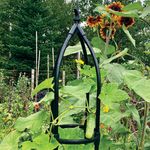
Lee Valley Garden Obelisks
Fine Gardening receives a commission for items purchased through links on this site, including Amazon Associates and other affiliate advertising programs.
Sturdy yet lightweight, these obelisks provide ample support for climbing plants while being easy to install and move. The medium obelisk stands 68 1/2″ high overall with a diameter of about 9 1/2″, compact enough for smaller containers indoors or out. The large size stands 86 1/2″ high with a diameter of 15 3/4″, ideal for larger outdoor spaces and containers.
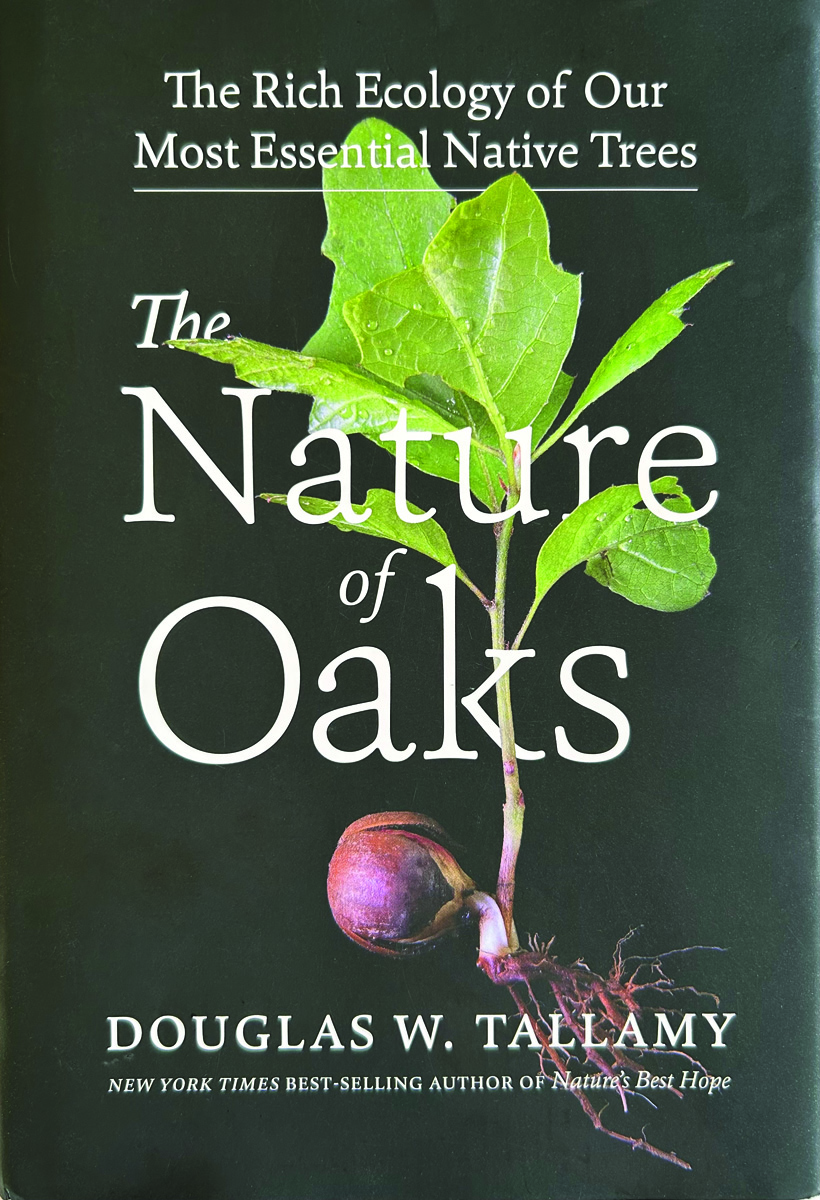
The Nature of Oaks: The Rich Ecology of Our Most Essential Native Trees
Fine Gardening receives a commission for items purchased through links on this site, including Amazon Associates and other affiliate advertising programs.
The Nature of Oaks reveals what is going on in oak trees month by month, highlighting the seasonal cycles of life, death, and renewal. From woodpeckers who collect and store hundreds of acorns for sustenance to the beauty of jewel caterpillars, Doug Tallamy illuminates and celebrates the wonders that occur right in our own backyards. He also shares practical advice about how to plant and care for an oak, along with information about the best oak species for your area.
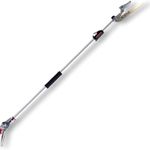
ARS Telescoping Long Reach Pruner
Fine Gardening receives a commission for items purchased through links on this site, including Amazon Associates and other affiliate advertising programs.
Telescopes from 4 to 7′. Cut and Hold (160) Blades. Drop forged blades for unsurpassed long lasting sharpness. Lightweight, 2.3 lbs., for continued use. Perfectly balanced for easy pruning.

